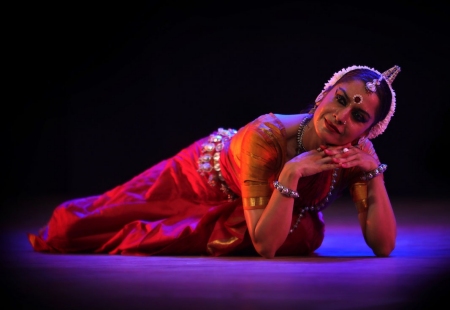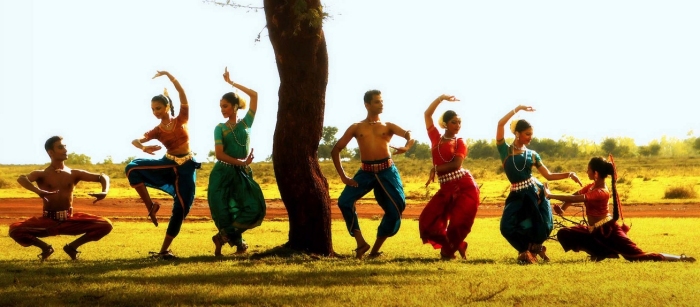
|   |

|   |
Nrityagram and Chitrasena Dance in 'Āhuti' telecast by NYU Abu Dhabi - Rajika Puri e-mail: rajikapuri@yahoo.com March 5, 2021 As a passionate lover of live dance performance, a year of virtual viewing meant I had to drag myself to watch - on Feb 17, 2021- the transmission by NYU Abu Dhabi of the Nrityagram and Chitrasena Dance Companies in their second collaborative show, 'Āhuti'. Had I not done so, I would have missed one of the most glorious dance experiences of the lockdown year: a luminous close-up of Surupa Sen in 'dheera sameere' from the fifth sargam of Jayadeva's Geeta Govinda.  Surupa Sen (Photo: Karthik Venkataraman) Simply put, Surupa's performance blew me away! I also realized that, but for a zoomed-in edit of a hi-definition recording, it would have been impossible to fully capture the nuances of Surupa's interpretation of an ashtapadi, one that, moreover, was richer for having been performed to live music - and in front of a live audience (at Bengaluru's Chowdiah Memorial Hall in September 2019). Surupa is first seen lying on the ground, pensive, completely immersed in thought. As the music wafts over her, her body comes alive and she becomes sakhi, painting for Radha a picture of Krishna wafted by gentle breezes on the banks of the Yamuna river. The stanzas unfold, and she metamorphoses from companion describing a poignant scene, to Radha receiving those stirring images, to the actual subject of her vivid portraiture. Surupa's sakhi is inspired storyteller, her Radha serene, taking it all in but not fully sure of the impact of what she hears. The most imaginative delineations are those of the flute player being described. Never before have I seen so many inventive ways of holding a flute. They seem to come out of nowhere. At one moment she has her left hand in a soft gomukha hasta at her chest; then she slowly turns until, as she faces front again, the hand is now near her lips - and you can almost hear him play! Each sequence of images that she introduces is revelatory and draws you into the nuances of Jayadeva's magnificent poetry. As the program progressed, even though I was somewhat frustrated by the flat online images of the large group works that included the four members of the Sri Lankan Chitrasena Dance Co, I was also struck by the deftness with which the performers were moved round the stage. In the end, dance is about movement and when there are several dancers, it can at best become a visual symphony, a harmonious weaving of bodies to form ever changing patterns in space.  Nrityagram and Chitrasena Dance Company (Photo: Karthik Venkataraman) I have always found Surupa's choreography inventive, even surprising. And though the final dance, Aalaap, lingered a little too long for me to watch with pleasure on a flat screen, the inventiveness with which the eight bodies were patterned gave rise to sheer joy. Also, though they all performed to an Odissi orchestra, the choreography maintained the integrity of the two distinct dance forms. The fact that Surupa is also steeped in Odissi rhythms (she often sits with the orchestra to chant the ukkuta syllables during performance) adds to the breadth of her choreographic vision. This talented artist who has been a backbone of the Nrityagram Dance Ensemble since its inception, simply lives and breathes every aspect of her complex art which, nowadays, includes not only teaching it but, also, adding to the very dance vocabulary of Odissi as she choreographs. Protima Bedi founded the dance village precisely so that at Nrityagram, dancers could focus on just the art - in all its aspects - without worrying about rent, food, and other practicalities on which most dancers have to spend much time and energy. A bright light must emanate from wherever in the cosmos 'Gauri-ma' now roams, as she watches them continue to develop so magnificently.  Rajika Puri - a shishya of the Deba Prasad Das shaili of Odissi - is a writer, slide-lecturer and presenter of Indian dance festivals, based in New York. |